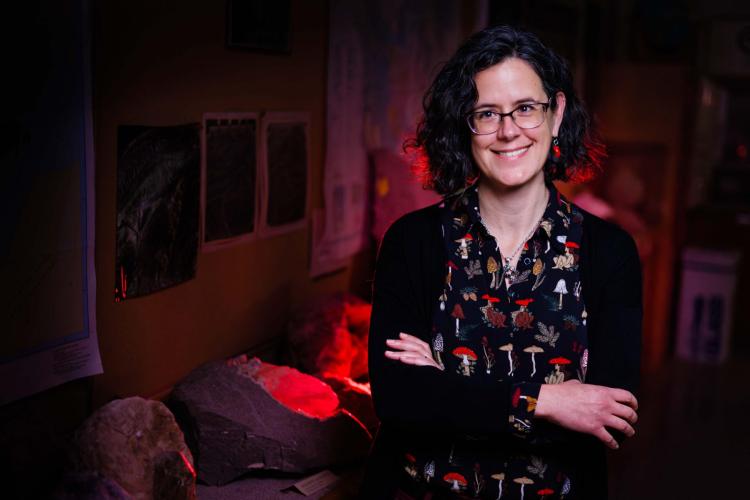No matter how many missions to Mars she takes part in, the sheer joy of unearthing discoveries about the Red Planet never gets old for Mariek Schmidt.

Mariek Schmidt, Professor and Chair of Brock University's Department of Earth Sciences, has been analyzing ancient rocks found within Mars' Jezero Crater.
In a new paper, "Diverse and highly differentiated lava suite in Jezero crater, Mars: Constraints on intracrustal magmatism revealed by Mars 2020 PIXL," published in Science Advances, Schmidt and her international research team shared compelling findings about a critical period of the planet's evolutionary history.
The Professor and Chair of Brock University's Department of Earth Sciences was a Participating Scientist in NASA's Mars Perseverance rover mission and has been analyzing ancient rocks found within Mars' Jezero Crater. One of the primary mission objectives is to search for signs of ancient microbial life on Mars, and igneous rocks and regolith examined in the area have also given insight into a time in the planet's history that has yet to be extensively studied.
"We're doing things on Mars that have never been done before," Schmidt says.
Schmidt is also a Co-Investigator on the Planetary Instrument for X-Ray Lithochemistry (PIXL) team. The PIXL, which is an X-ray fluorescence spectrometer, was used to determine the fine-scale elemental composition of Martian surface materials, allowing the scientists to remotely dive deep into the rocks to investigate how they formed and what they're made of.
"The scope of the science has been incredible; it's the most comprehensive study to date of these samples, that have been cached for Mars Sample Return," Schmidt says. "We now know the mineral and rock chemistry and understand the textures, but the next step was to talk about how we think the rocks formed, in terms of magmas rising through and crystallizing in the Martian crust, then evolving and changing composition."
The paper, released on Friday, Jan. 24, also sets up a series of hypotheses that can guide follow-up research when the samples are brought to Earth years from now. NASA is currently formulating plans to do so in conjunction with the European Space Agency (ESA).
Tanya Kizovski, co-author on the paper and Associate Curator of Mineralogy at the Royal Ontario Museum, says all of the Martian samples studied on Earth thus far have been meteorites.
Most of the Martian meteorites are less than 500 million years old relatively young compared to Mars' 4.5-billion-year history while the samples from Jezero Crater are believed to be at least 3.5 billion years old.
"Mars is very well-preserved in terms of the early history of our solar system, so being able to look at rocks that are this old especially when they are brought to Earth will help us learn about the history of our inner solar system and when life evolved," says Kizovski, a postdoctoral fellow at Brock during the project. "We can also date when igneous rocks crystallized. We can't do that while the rock is still on Mars, but those samples will be an important anchor we can use to learn about the timing of processes in the region once analyzed here on Earth."
The samples also come from a unique time in Mars history, Schmidt says, when the internal dynamics of the planet were undergoing major changes.
"Volcanism on Mars is really dominated by what we call hot spots similar to Earth's Hawaii or Iceland where there's a focused magma source that's rooted deep, punches up through everything and then erupts at the surface," she says. "But early on in Mars history, there's modelling to support the idea that the Martian crust was built up by widespread volcanism not necessarily focused on those hot spots and that transition is thought to have happened around the time that these rocks formed."
Schmidt and the team still have a while to wait potentially a decade or more before the samples are planned to land on Earth.
"Bringing these samples from Mars will be incredibly challenging and involve an incredible feat of engineering, especially when you consider that you are retrieving something from orbit that is essentially the size of a basketball," Schmidt says.
In the meantime, the Perseverance rover is still traversing Mars and collecting samples in a new location while Schmidt and her colleagues are patiently awaiting the chance to one day analyze the Martian rocks, Earth-side.
Schmidt was selected as a Participating Scientist through a NASA program and was supported by a grant from the Canadian Space Agency Mars 2020 Participating Scientist Program.
More information can be found on the Science Advances and Mars 2020 websites.










